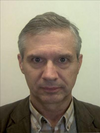Dissertação
{pt_PT=Moduladores Ressonantes de Alta Tensão Para Alvo do ISOLDE} {} EVALUATED
{pt=O presente trabalho apresenta uma nova topologia para o modulador de tensão do acelerador On-Line Isotope Mass Separator ISOLDE presente na Organização Europeia de Investigação Nuclear (CERN). Este acelerador permite estudar núcleos radioativos produzidos por um feixe de iões num alvo. O sucesso da investigação nesta instalação depende da precisão e estabilidade dos equipamentos que alimentam o acelerador, cuja tensão nominal é de 60 kV. O protótipo estudado tira partido dos avanços e conclusões até à data, para desenvolver uma topologia ressonante que utiliza apenas dois semicondutores MOSFET e quatro díodos, comandados por um microcontrolador, para polarizar o alvo e devolver a energia à fonte. Isto é conseguido com o recurso a uma bobine que permite oscilar a energia entre a fonte de tensão e o alvo, e entre o alvo e a fonte, comandada pelos interruptores MOSFET em momentos precisos. Foram realizadas simulações à topologia recorrendo ao software Cadence Orcad, e ensaios laboratoriais à tensão de 100 V. Neles foi possível confirmar o funcionamento ressonante do circuito onde a tensão no alvo é modelada a 0 V, simulando o feixe de iões no alvo, recuperando para a tensão nominal de 100 V e estabilizando nesse valor eficientemente, simulando a medição das massas separadas após colisão., en=This work presents a new topology to replace the actual pulse transformer and thyratron based resonant converter for the ion acceleration of the On-Line Isotope Mass Separator ISOLDE accelerator. This accelerator allows studying radioactive nuclei produced by 60 keV ion beams which require an exceptional precision and stability of the accelerating voltage, rated at 60 kV. The prototype studied takes the lessons learned from the previous works to develop a resonant topology that uses only two MOSFET semiconductors and four diodes to charge and discharge the target, returning as much energy as possible to the source. This is achieved with the use of a coil that allows the energy to oscillate between the voltage source and the target, and between the target and the source, controlled by MOSFET switches at precise times. The topology presented was simulated using Cadence Orcad software and tested in the lab at 100 V. In both scenarios was possible to confirm the resonant behavior of the circuit when the target was charged, simulating the mass separation measurement, and discharged, simulating the beam hitting the target, with high efficiency.}
janeiro 21, 2021, 10:0
Publicação
Obra sujeita a Direitos de Autor
Orientação
ORIENTADOR
Departamento de Engenharia Electrotécnica e de Computadores (DEEC)
Professor Catedrático


